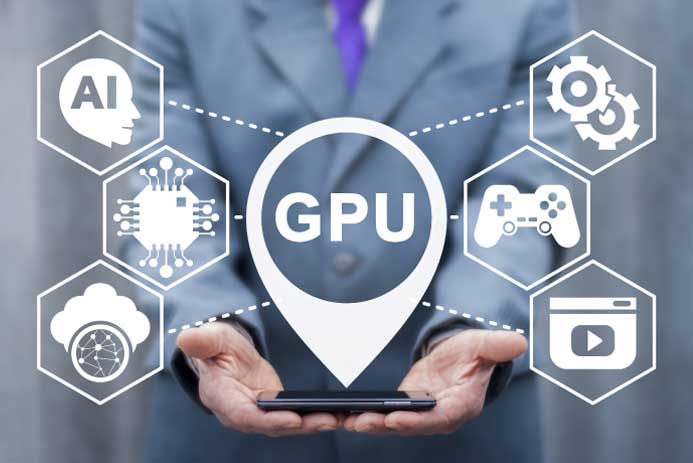High Performance Compute
Feb 01, 2024
How HPC Drives Efficiency And Accuracy In Weather Forecasts
As weather patterns grow increasingly erratic, precise forecasting has become a crucial defense in our battle against nature’s unpredictable forces.…
High Performance Compute
Published on January 27, 2021

At the start of the year 2020, a promising development involving the use of Artificial Intelligence (AI) in detecting breast cancer was announced. Researchers from Google Health, DeepMind, Imperial College, London, the NHS, and the Northwestern University in the US, created an AI model that was able to correctly identify cancer from X-ray images with an accuracy like expert radiologists. The AI model which was trained by analysing images from close to 29,000 women has the potential to revolutionise healthcare, as it can not only reduce the probability of errors, but also alleviate the pressure on healthcare systems.
As we can see, while the potential is huge, the biggest challenge in healthcare today is the fact that solving complex problems requires vast amounts of data and extreme computational power to analyse this data. For example, in 2018, OpenAI, an AI research and development firm, estimated that the amount of computational power required to train the largest AI models had doubled every 3.4 months since 2012. Looking at the increased demand for computational power for AI, researchers at the Massachusetts Institute of Technology warned recently warned that deep learning is hitting computational limits. The researchers concluded that deep learning progress was dependent on an increase in computational ability.
In this context, the convergence of AI and High-Performance Computing (HPC) is extremely beneficial as it can lead to a win-win situation for every stakeholder in the healthcare ecosystem. HPC and AI have a symbiotic relationship and can complement each other. HPC utilises a cluster of systems working together as a cohesive unit to achieve high-performance goals. AI needs specialised hardware that supports processing of trillions of calculations per second. This is where it is perfectly suited for AI.
The costs of most traditional HPC systems are disproportionate to meet unexpected demand. To avoid these issues, healthcare firms can consider using High-Performance Computing-as-a-Service (HPCaaS), which gives cost efficiencies with guaranteed performance and requires zero CAPEX investment and can be consumed using a pay-as-you-use model. Scalability is also not an issue and can be scaled up or down as per the workloads.
Today, HPC systems leverage modern GPUs that contain hundreds of processing units, which are capable of processing huge number of transactions per second. With the ability to run large number of processes in parallel, GPUs in HPC systems can process large data sets in less amount of time. From an AI perspective, this also allows organisations to process significantly higher volumes of data, which helps improve the AI model.
Leveraged intelligently, AI can significantly impact every healthcare segment – from predictive diagnostics to personalised treatments, which can have a big impact on drug development and clinical research. For example, today, more and more data is stored and generated. Electronic health records are available today for many people, which has allowed researchers and doctors to look at genetic information, medical history, and allergies, and understand how technology can help in making better decisions with respect to treatment.
Today, in clinical trials, the same drug is given to multiple people. However, as every human being has a different genetic approach, the ideal way should be to personalise drugs for each person. This has not been possible till date, due to the huge challenges of collecting and analysing data from a huge number of records. With AI and machine learning today, it is possible to analyse data faster than manual processes.
One of the best use cases of using AI in finding effective drugs can be seen from the recent efforts of scientists to find out possible drugs against COVID-19. Scientists at the University of California, Riverside, have used machine learning to identify hundreds of potential new medicines that could help treat COVID-19. Given the race against time to identify probable drug candidates, the scientists used machine learning techniques to screen more than 10 million commercially available small molecules from a database comprised of 200 million chemicals and identified the best probable cases for the 65 human proteins that interact with the SARS-CoV-2 proteins. The machine learning model also helped the researchers screen out toxic drugs.
This was used to create a drug discovery pipeline that could interfere with the entry and replication of the SARS-CoV-2 virus in the body. These kinds of experiments need an HPC infrastructure that can run AI algorithms. Given the time constraints in finding effective drugs against COVID-19, AI has been a game-changer.
The combined force
The combination of AI and HPC can also be used for real-time prediction of clinical interventions in intensive care units. Using real-time monitoring of vital signs of patient data such as blood pressure, heart rate and glucose levels, more precise future treatment can be undertaken. There are several other inspiring examples around the globe.
| How HPC benefits Artificial Intelligence:Powered by GPUs— GPU instances parallelly process AI-based algorithms, taking off load from the CPUs to deliver analysis efficiently and faster.Data Volume – With super computational power, HPC can churn volumes of data with accuracy, thus aiding AI.Cost Efficient —HPCaaS provides a more cost-effective access to supercomputing without the need to invest or maintain the hardware. One can access HPC with pay-as-you-go pricing and avoid upfront capital costs. |
Boston-based startup, FDNA, uses facial recognition techniques to identify close to 50 known genetic syndromes from the photographs of patients. The company has used cloud-based GPUs to analyse the huge amount of data received and collected from clinics and geneticists around the world and used this data to build its algorithm. Today, its algorithm is used by 70 percent of geneticists worldwide. This has become extremely useful in advancing the diagnostics for rare diseases.
Similarly, the New York University’s Langone School of Medicine has demonstrated how its team used deep learning to predict 200 ailments three months faster than traditional methods by analysing electronic health records such as X-rays, lab tests and doctor’s notes. As more and more data are ingested by AI, the better will be the accuracy.
In the future, as more remote healthcare models come into play, the availability of data in electronic forms will be huge. This will pave the way for more precise AI-enabled healthcare models, as healthcare officials use the huge data at their disposal to create intelligent algorithms that can dramatically improve the way healthcare services are delivered and consumed.

High Performance Compute
Feb 01, 2024
As weather patterns grow increasingly erratic, precise forecasting has become a crucial defense in our battle against nature’s unpredictable forces.…

High Performance Compute
Nov 07, 2023
High-performance computing (HPC) is pivotal in driving innovation and accelerating research and development (R&D) across various domains. It is emerging…

High Performance Compute
Sep 18, 2023
In the ever-evolving landscape of computing, GPU as a Service (GPUaaS) has emerged as a groundbreaking solution that empowers organisations…